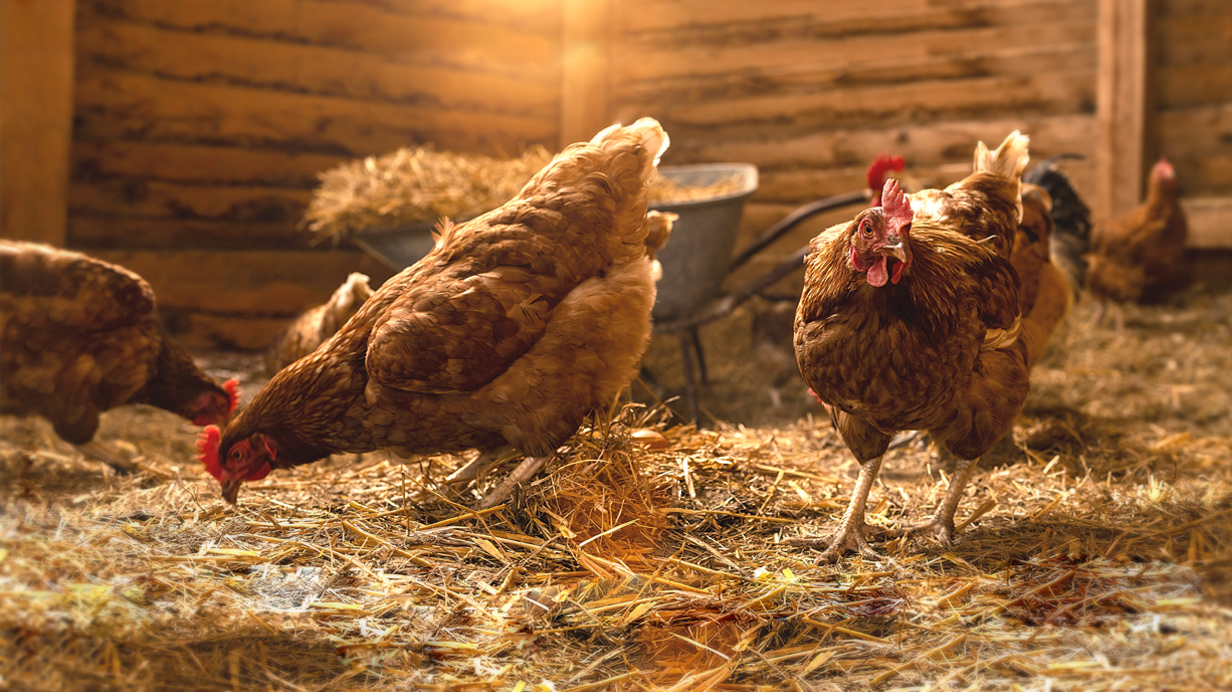How to solve common henhouse problems
Even with good management, problems such as piling, disease, leg disorders, and cannibalism can occur in the barn. Here are some common problems and how to solve them.
Piling
Piling can occur if the ambient temperature of the barn is too cold or if there is a sudden, unexpected noise.
If birds are cold, they will pile up on top of each other and suffocate those on the bottom. Make sure that the barn is kept at an appropriate temperature, especially at night.
Before entering the barn, lightly knock on the door, then open it and move slowly. Keep the doors locked to prevent animals, children, and other unauthorized persons from entering the barn.
Coccidiosis
Coccidiosis is a major poultry disease that can lead to significant losses. It is caused by a protozoan which destroys cells in the intestine.
Poultry are very susceptible to coccidiosis until they are eight to 10 weeks old, after which they develop their own immunity. Infected birds are pale, dehydrated, and shivering. There may be blood in their droppings.
Infected birds need to be treated with a coccidiostat on the recommendation of a veterinarian. The main predisposing factor is litter that is too wet.
Worms
Many types of worms can infect the intestinal tract of poultry. Effective worm control is achieved by implementing a sound inter-flock sanitation program, properly managing litter, and keeping wild animals out of the flock.
Infected birds need to be treated with a dewormer on the recommendation of a veterinarian.
Leg disorders
It is normal for a number of birds in a flock to be affected by leg disorders. Bacterial and viral infections, poor litter management, and unbalanced diets all contribute to such disorders.
Fast-growing chickens are at higher risk of developing leg disorders.
Breast ulcers
A breast ulcer is an irritation of the sternum caused by contact with litter or equipment. The risk of breast ulcers is higher in birds with leg disorders and increases with age and weight gain.
To help prevent this problem, keep the litter in good condition, make sure that the floor space per bird is adequate, and follow the feed program.
Lice and mites
Lice and mites are parasites that live at the base of birds’ feathers. They suck blood and cause anaemia and other diseases that lead to weight loss and reduced egg production.
Infected birds must be treated with insecticides. A veterinarian can help you choose the right product.
Cannibalism
Cannibalism and feather pecking are vices that affect birds of all ages.
Overcrowding, high temperatures, bright lights, and other forms of stress can cause birds to peck each other. An unbalanced diet due to diluting feed with grain also contributes to cannibalism problems.
Following the feed program helps to prevent cannibalism. Increasing the floor space per bird is often necessary to allow shy birds to escape. Reducing light intensity can be effective. Also consider isolating severely injured birds and finding and isolating the animals responsible for the injuries.
Sudden death
Farmers can control light and light intensity or restrict feed to combat sudden death and recurrent leg disorders in broilers and roasters, provided they are using appropriate equipment and good management practices.
Feed restriction involves reducing the amount of feed given to birds, which slows their growth and reduces the number of sudden deaths and leg disorders.
Farmers should try to control light and light intensity before resorting to feed restriction.


